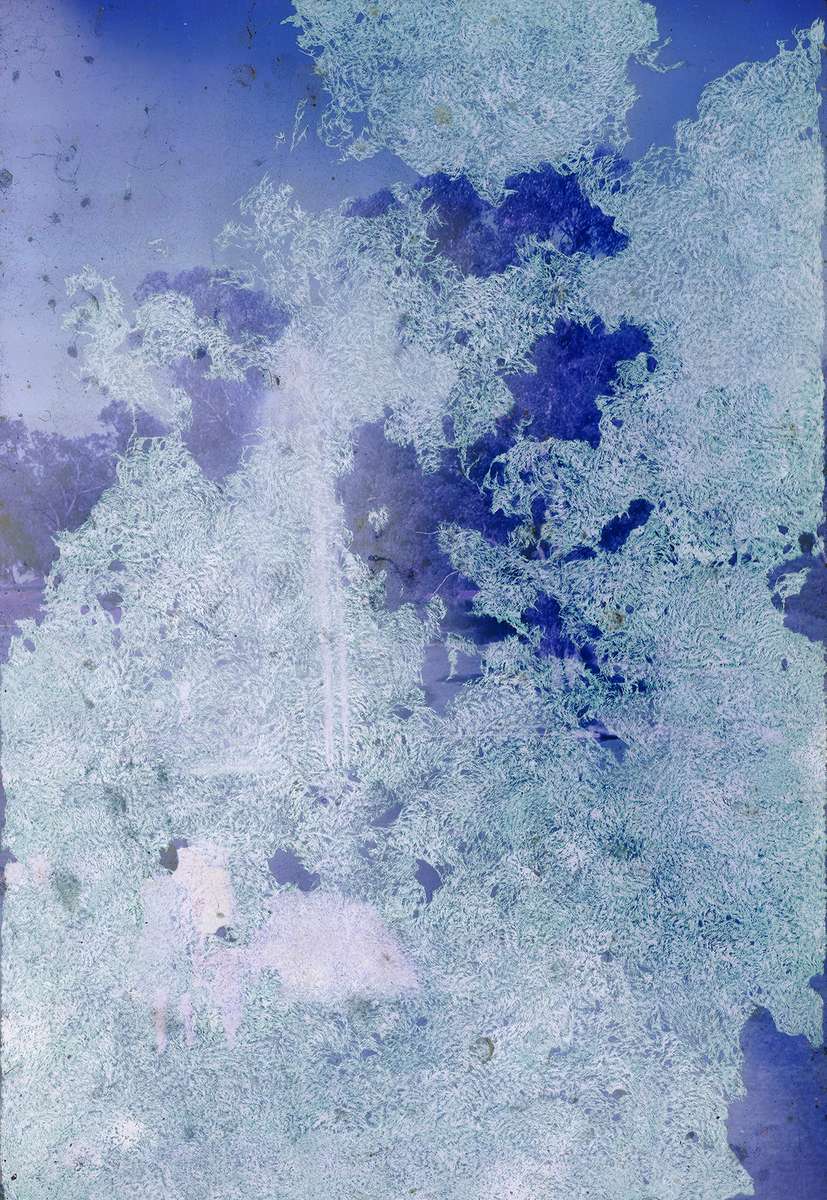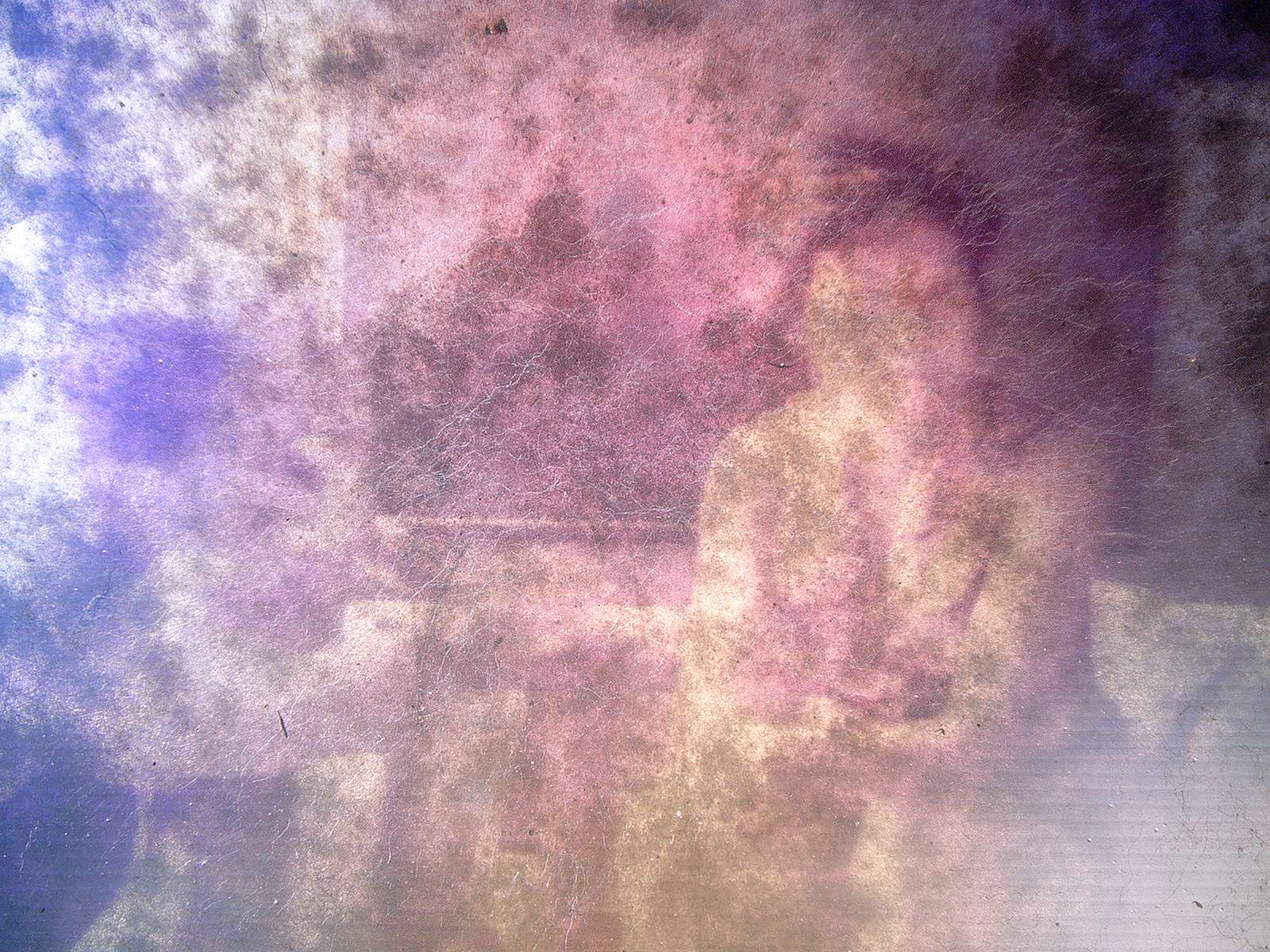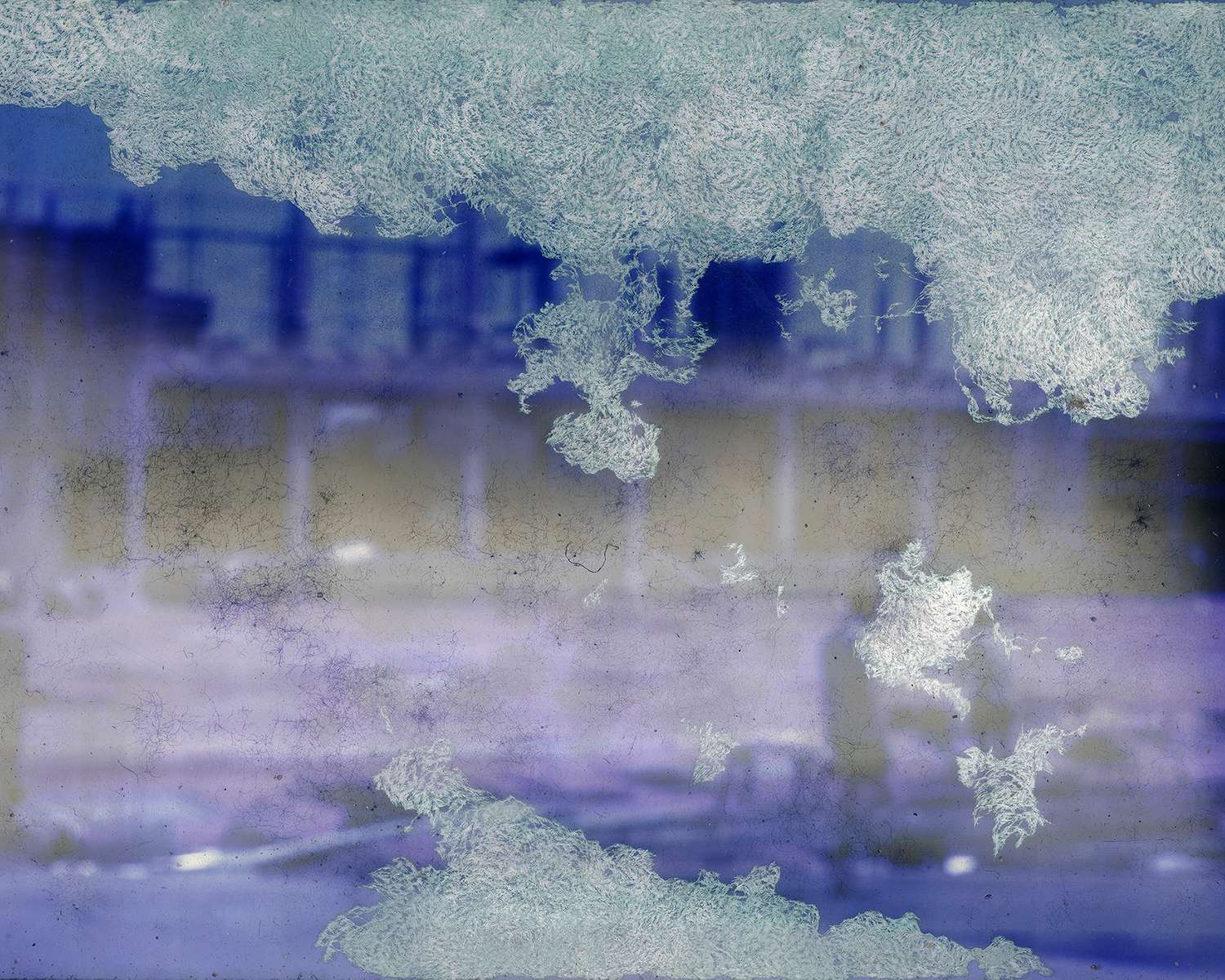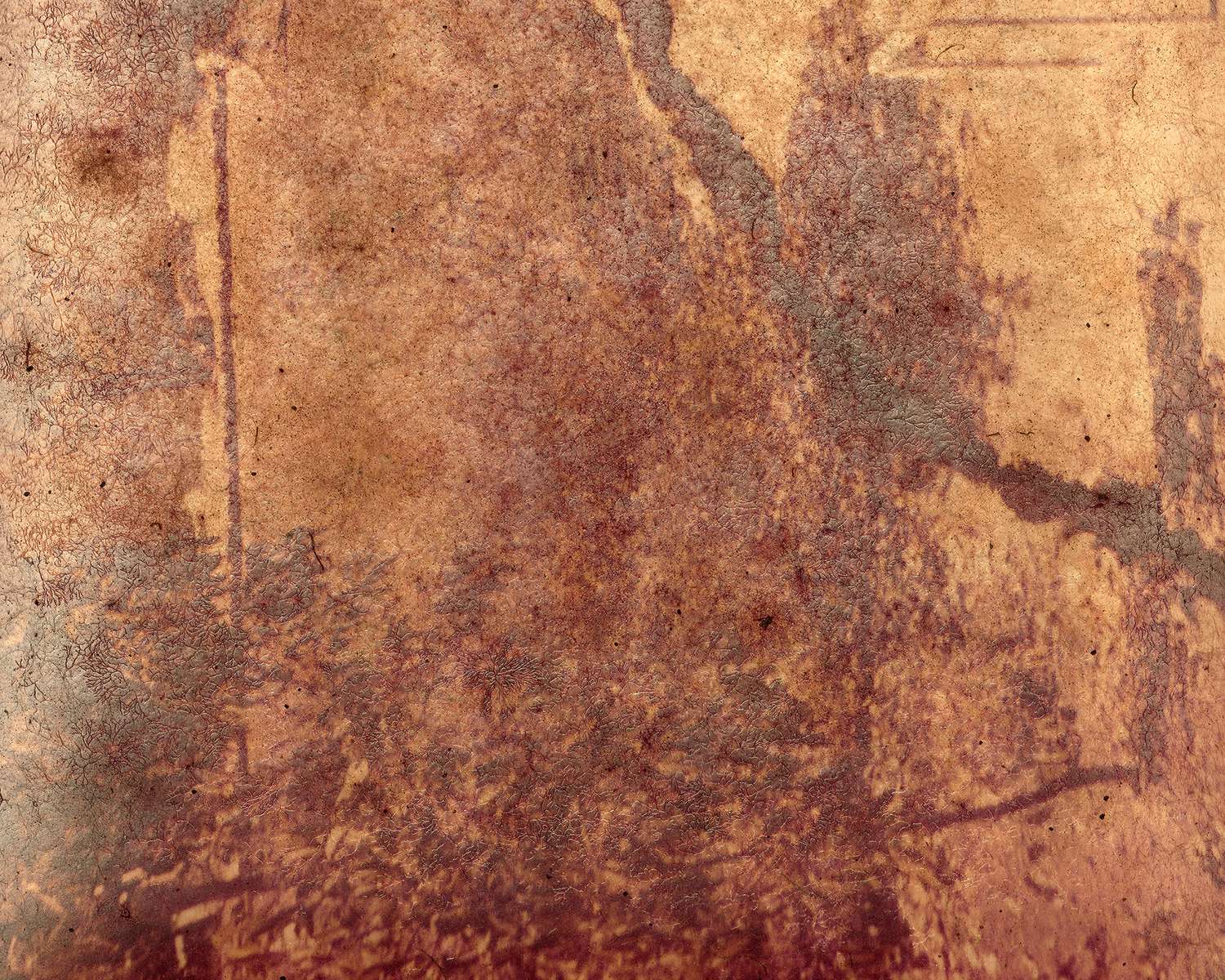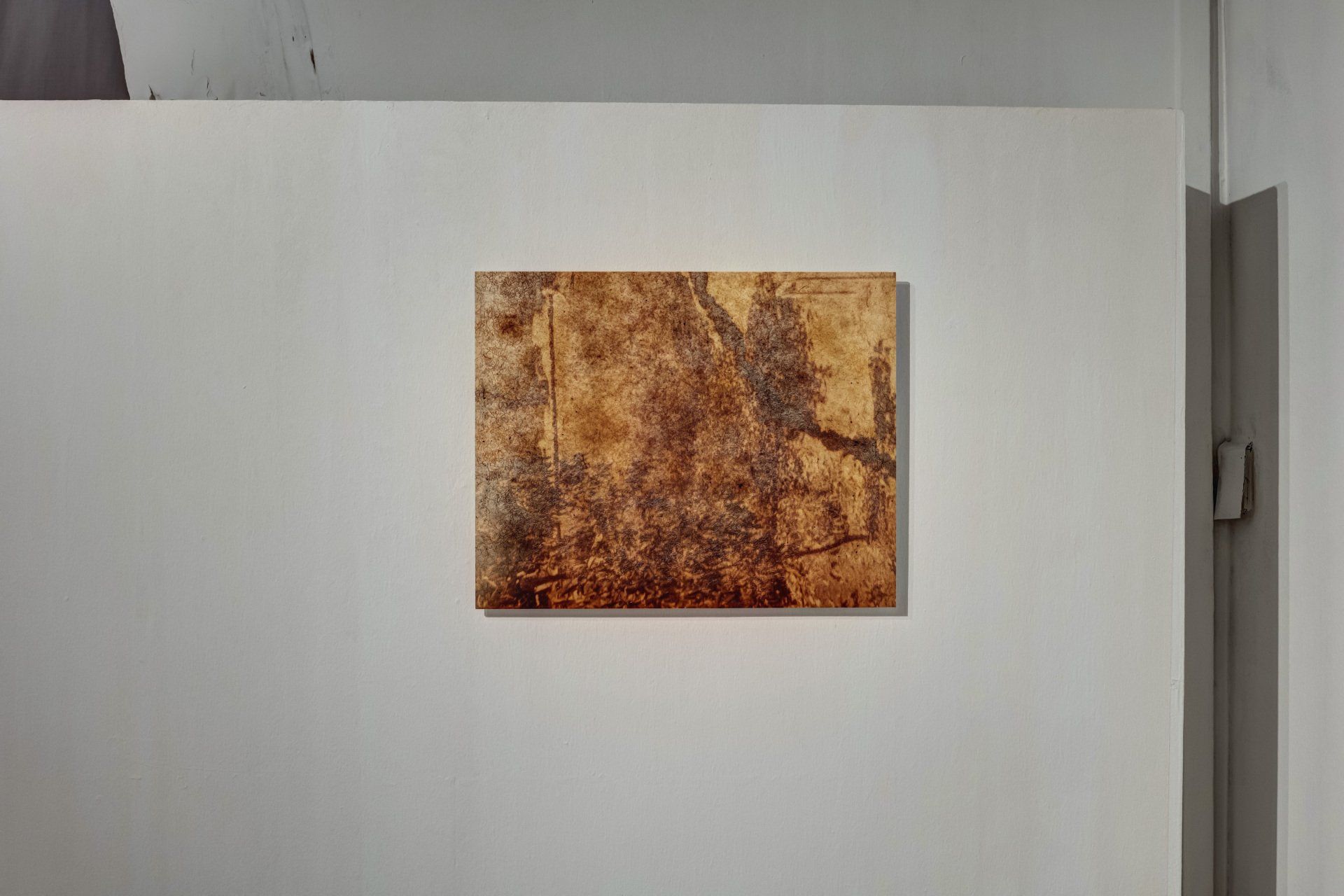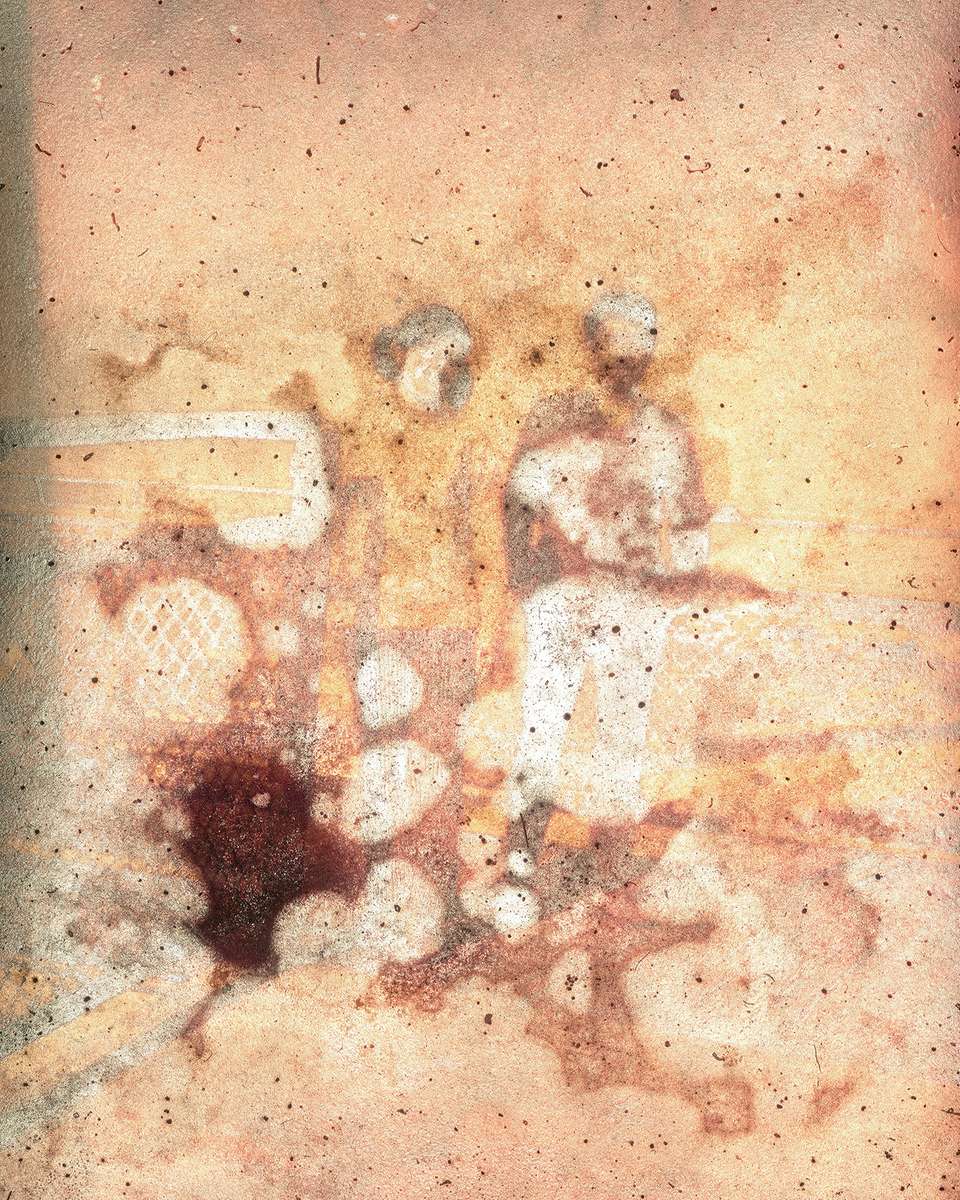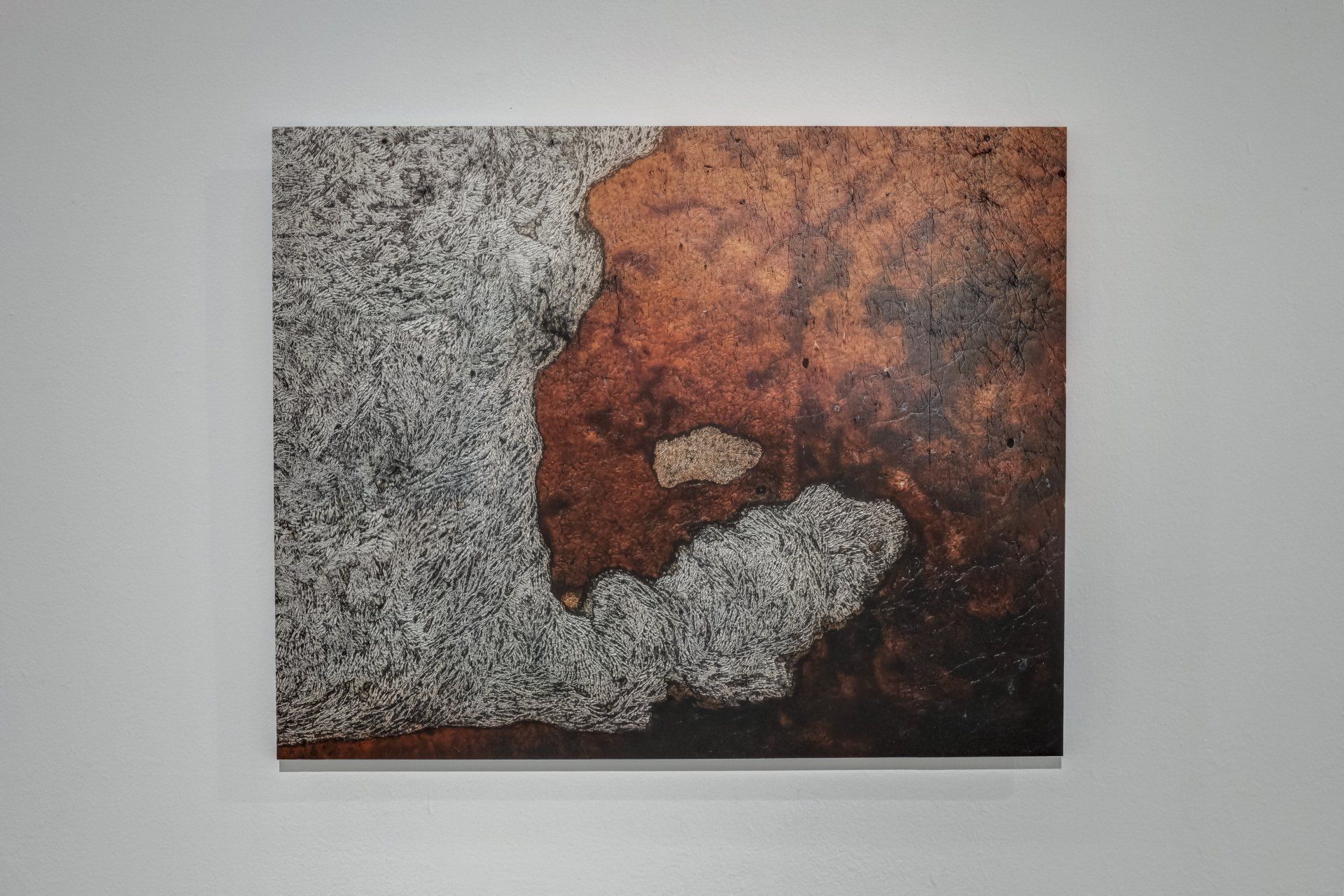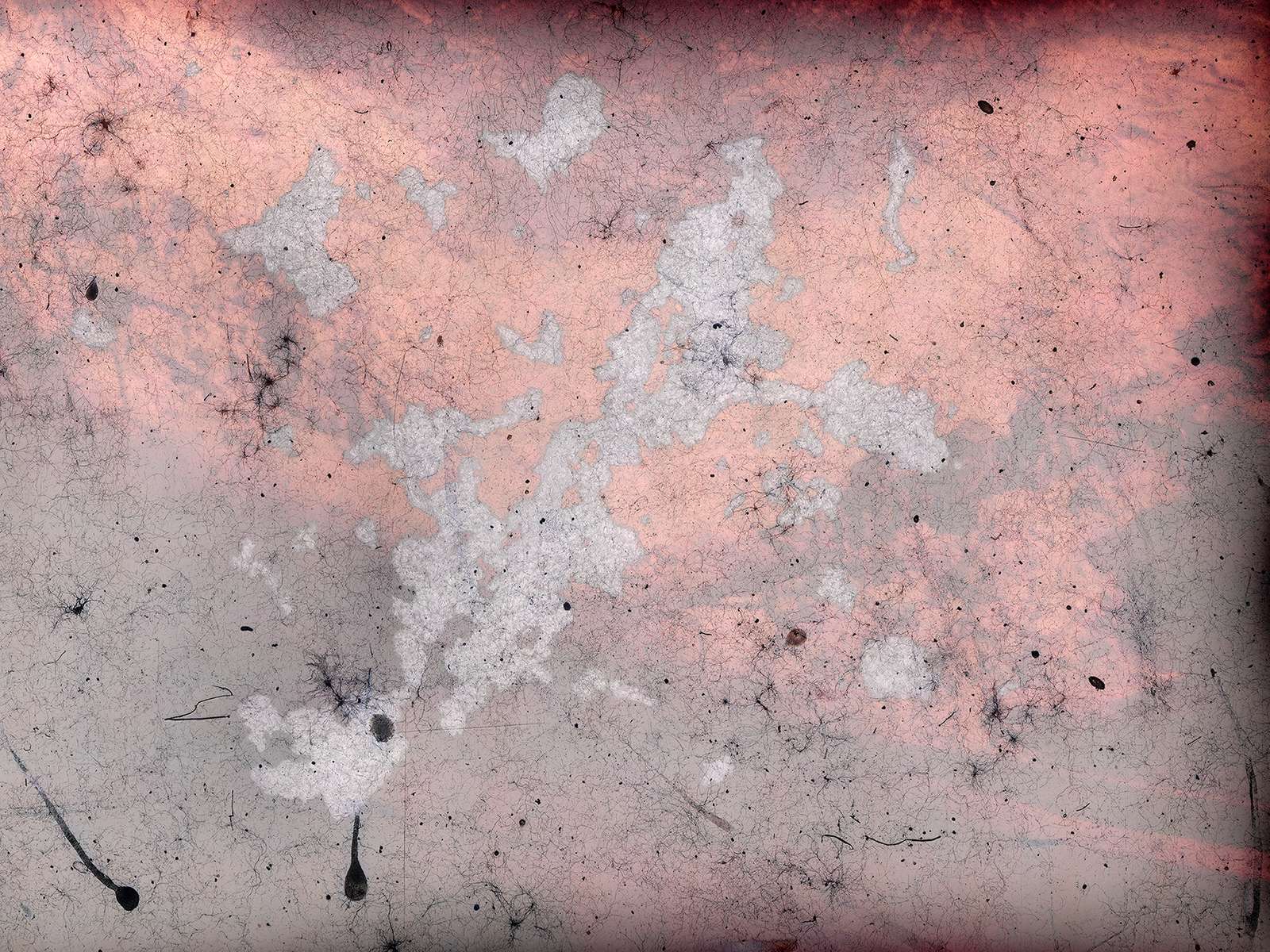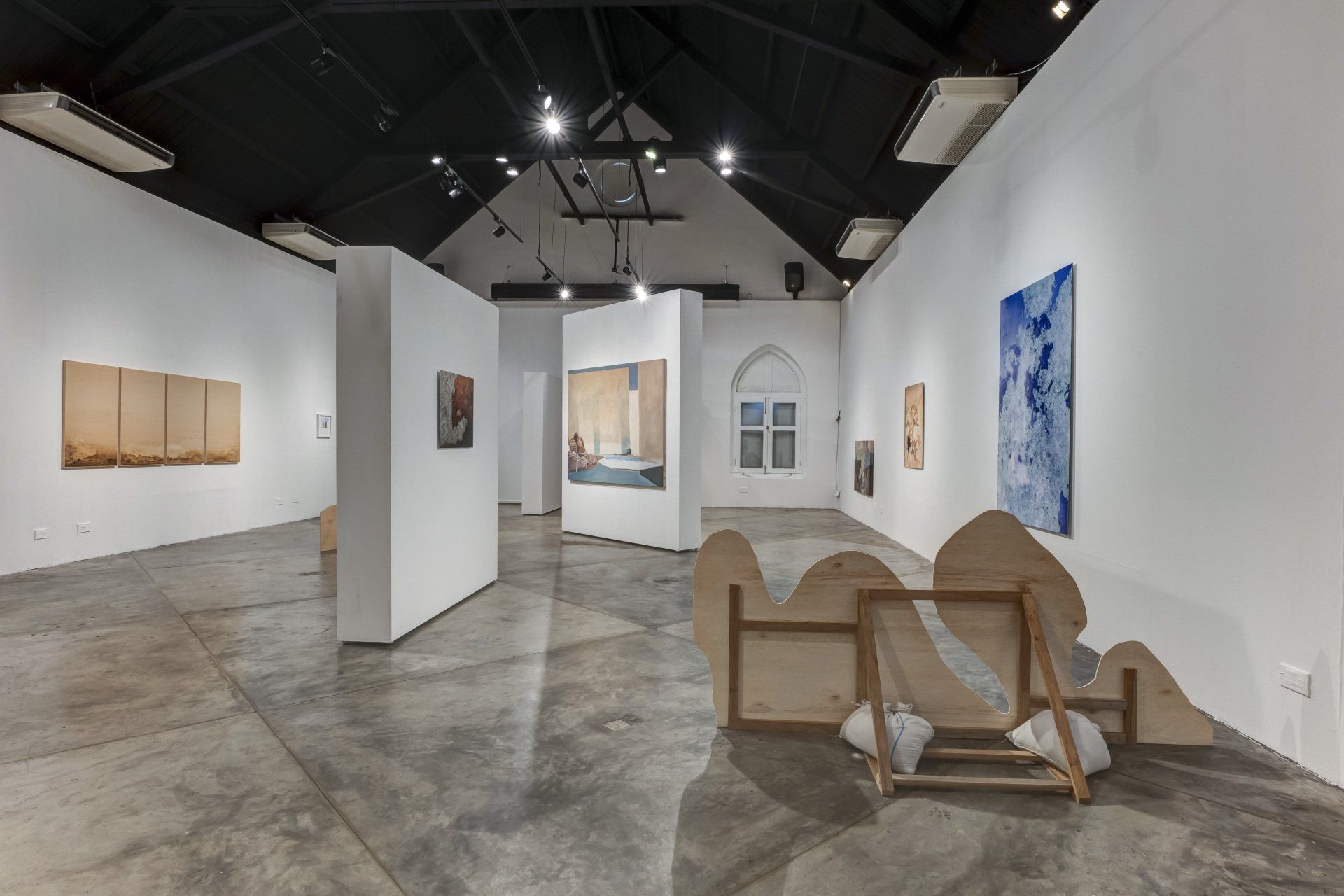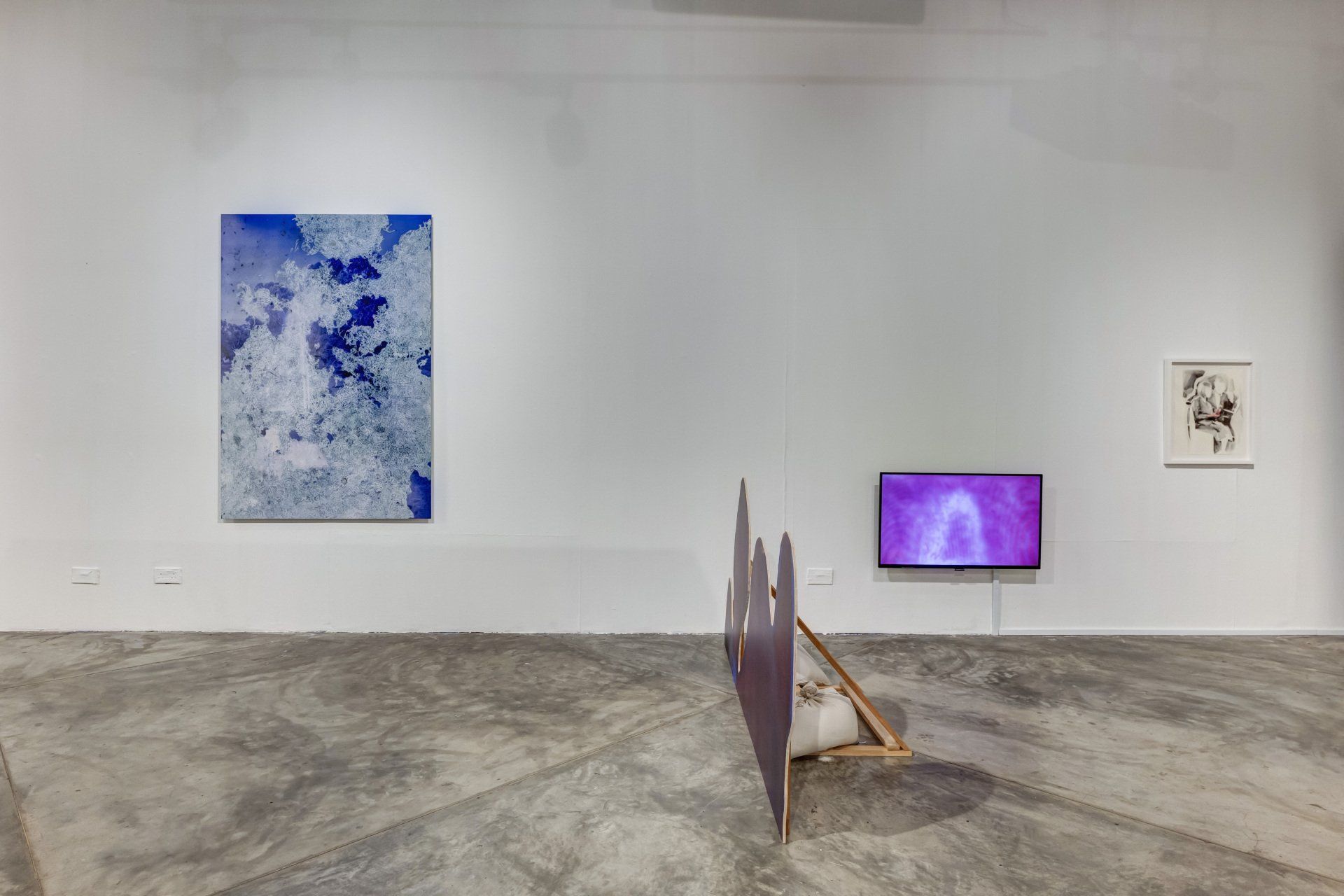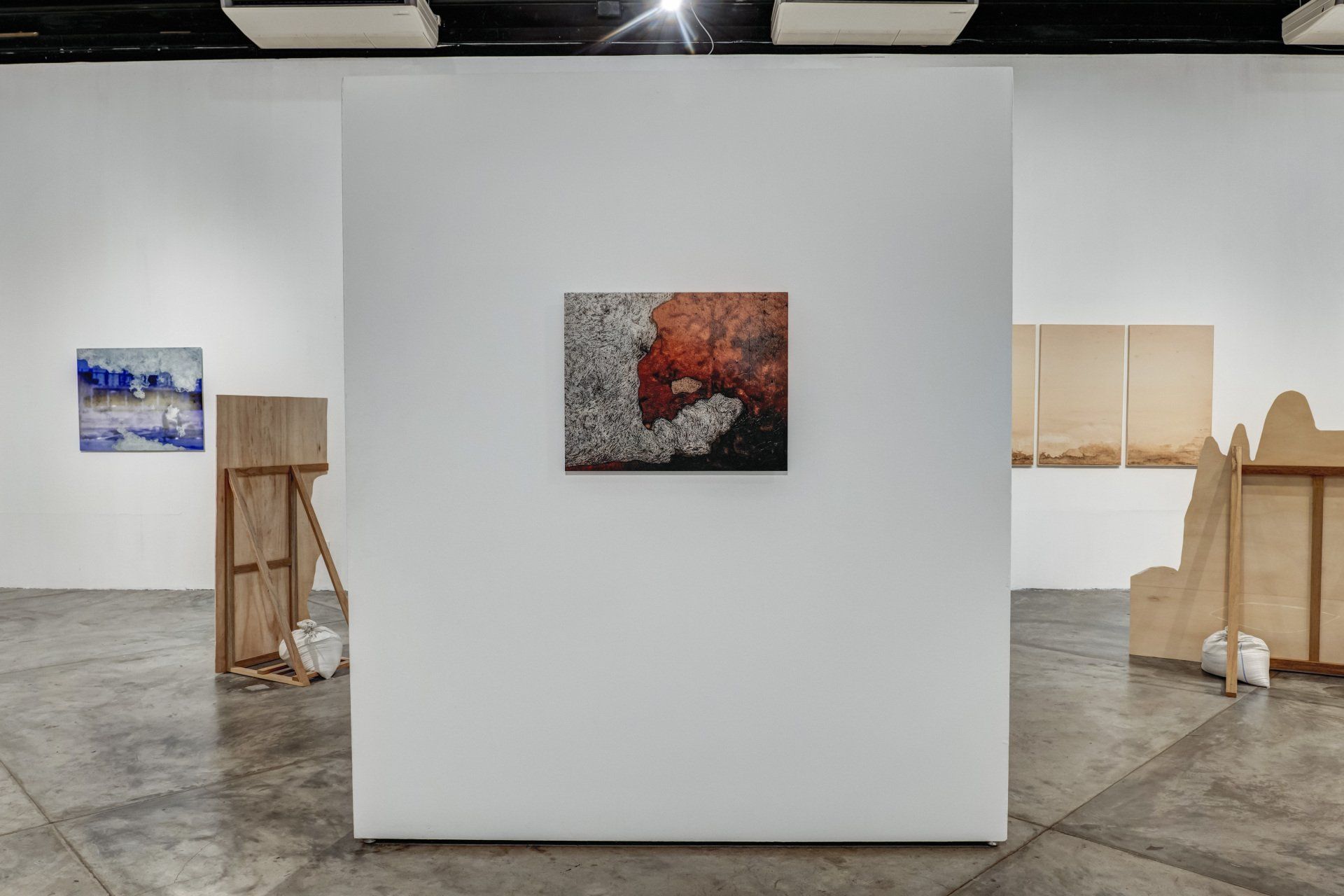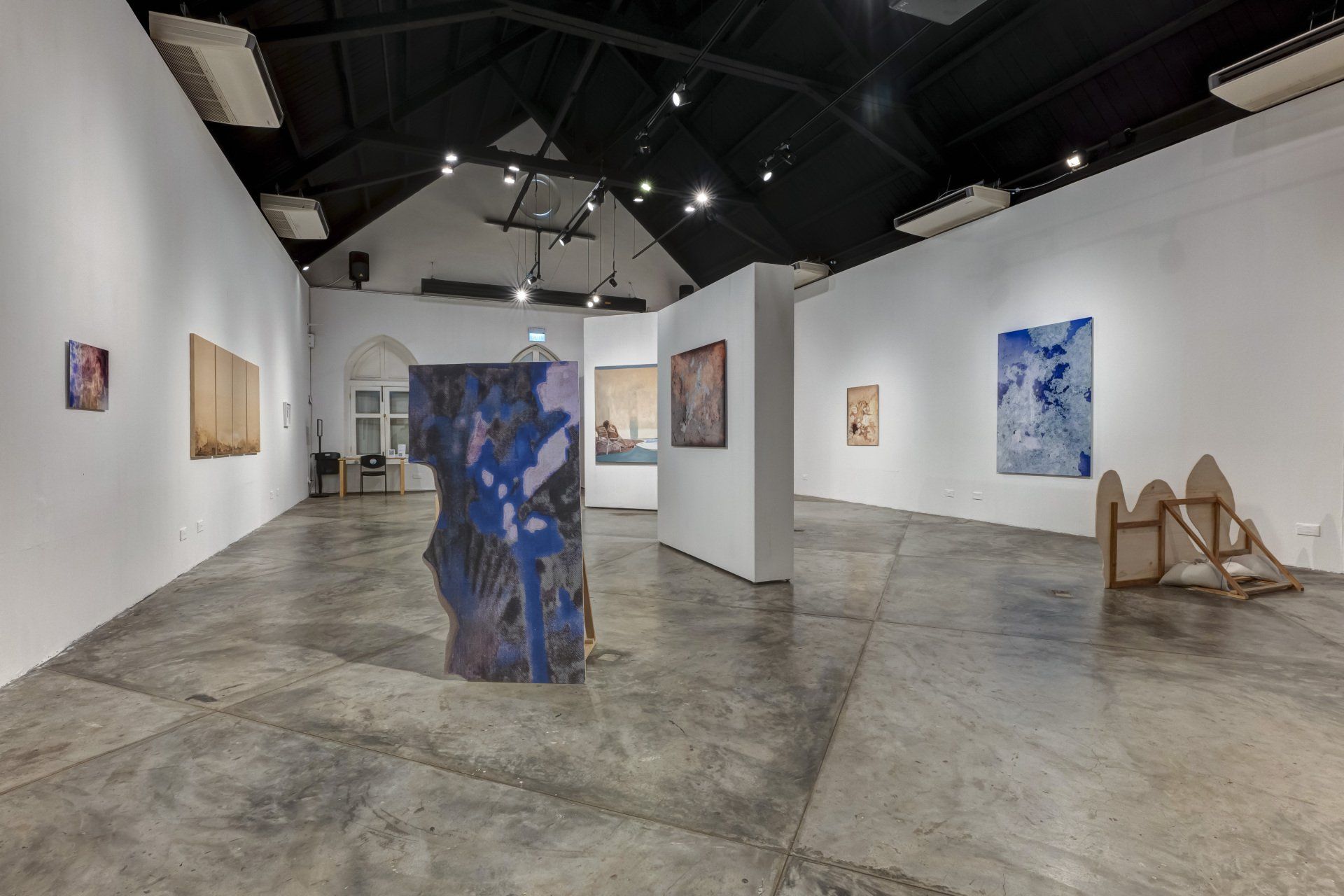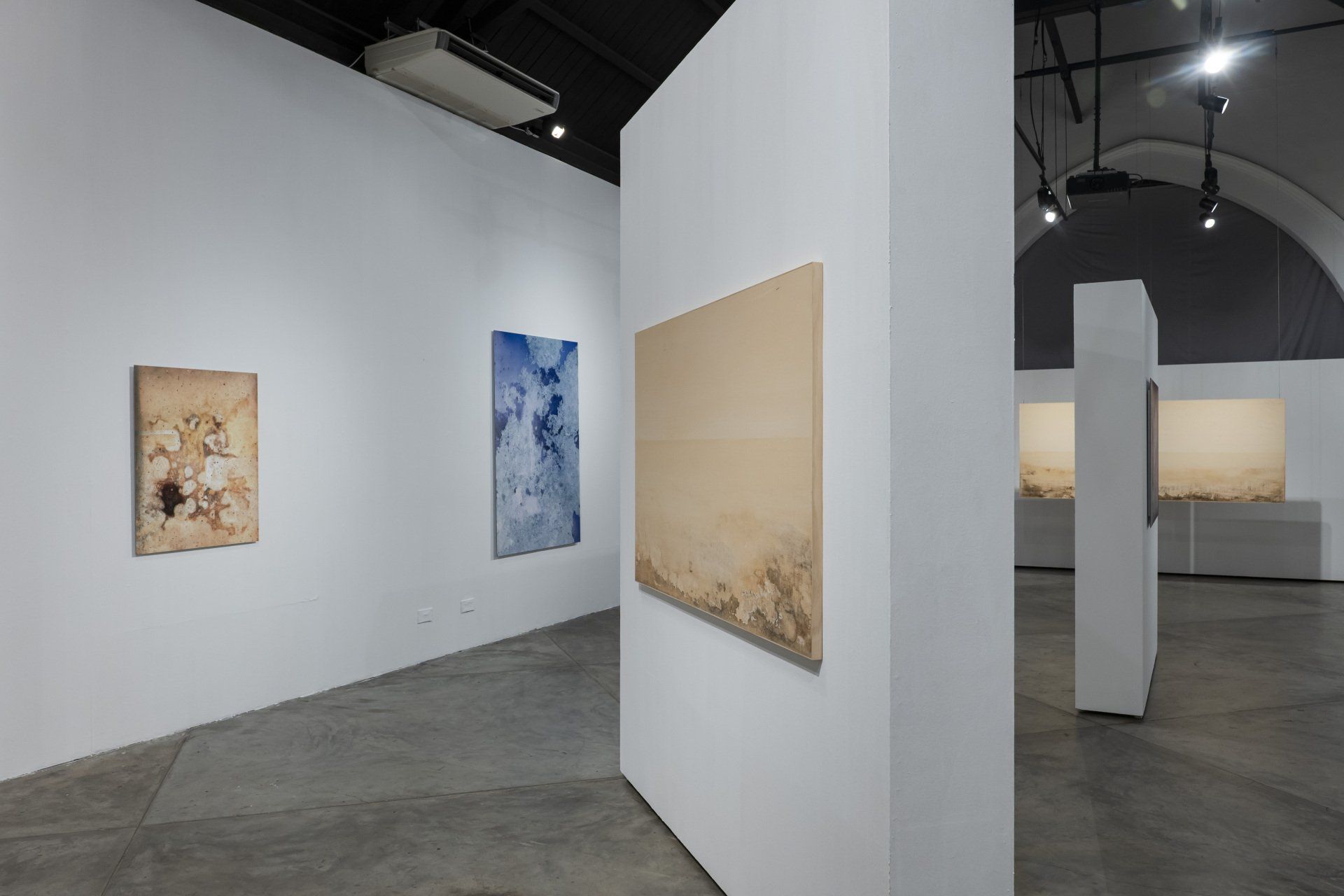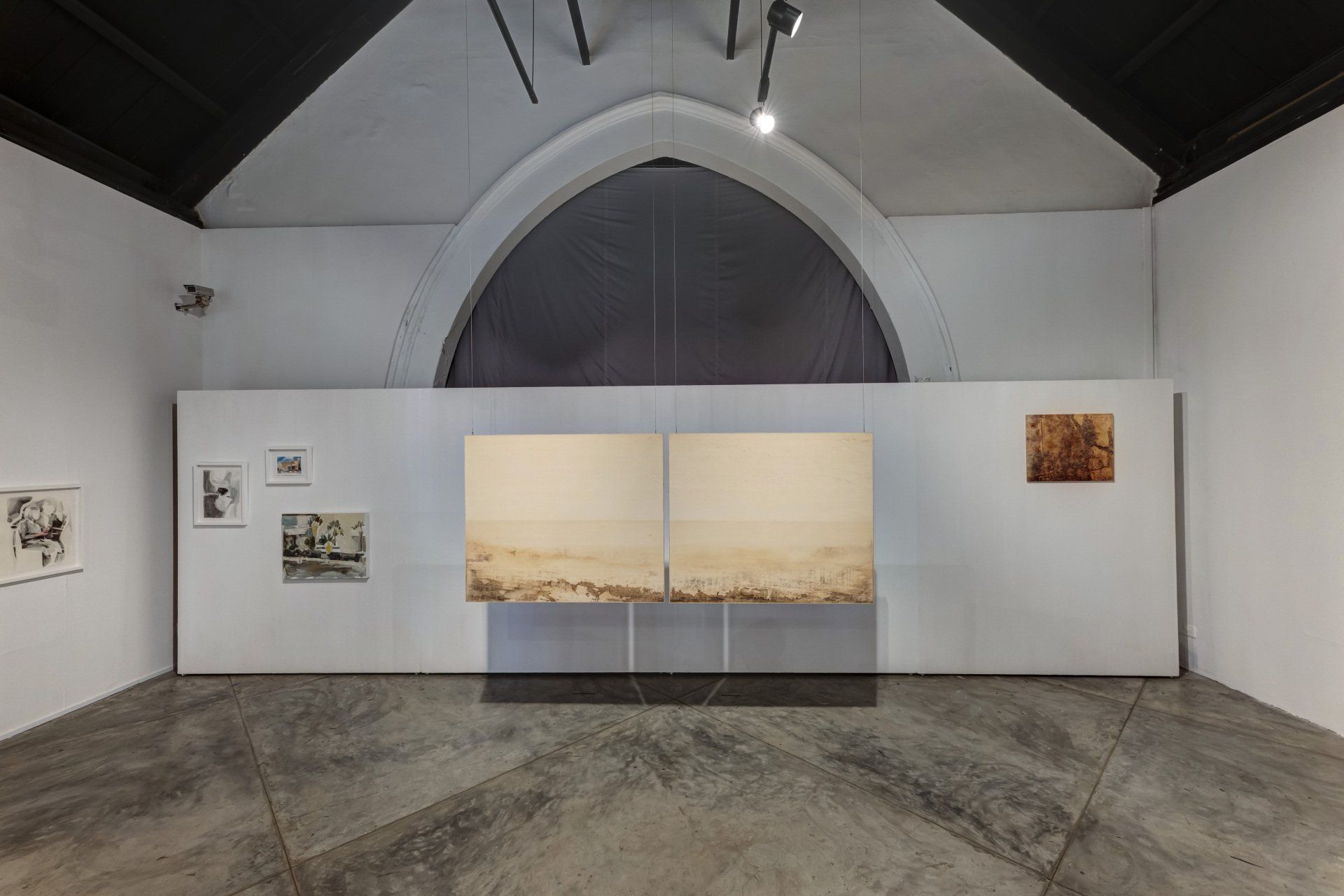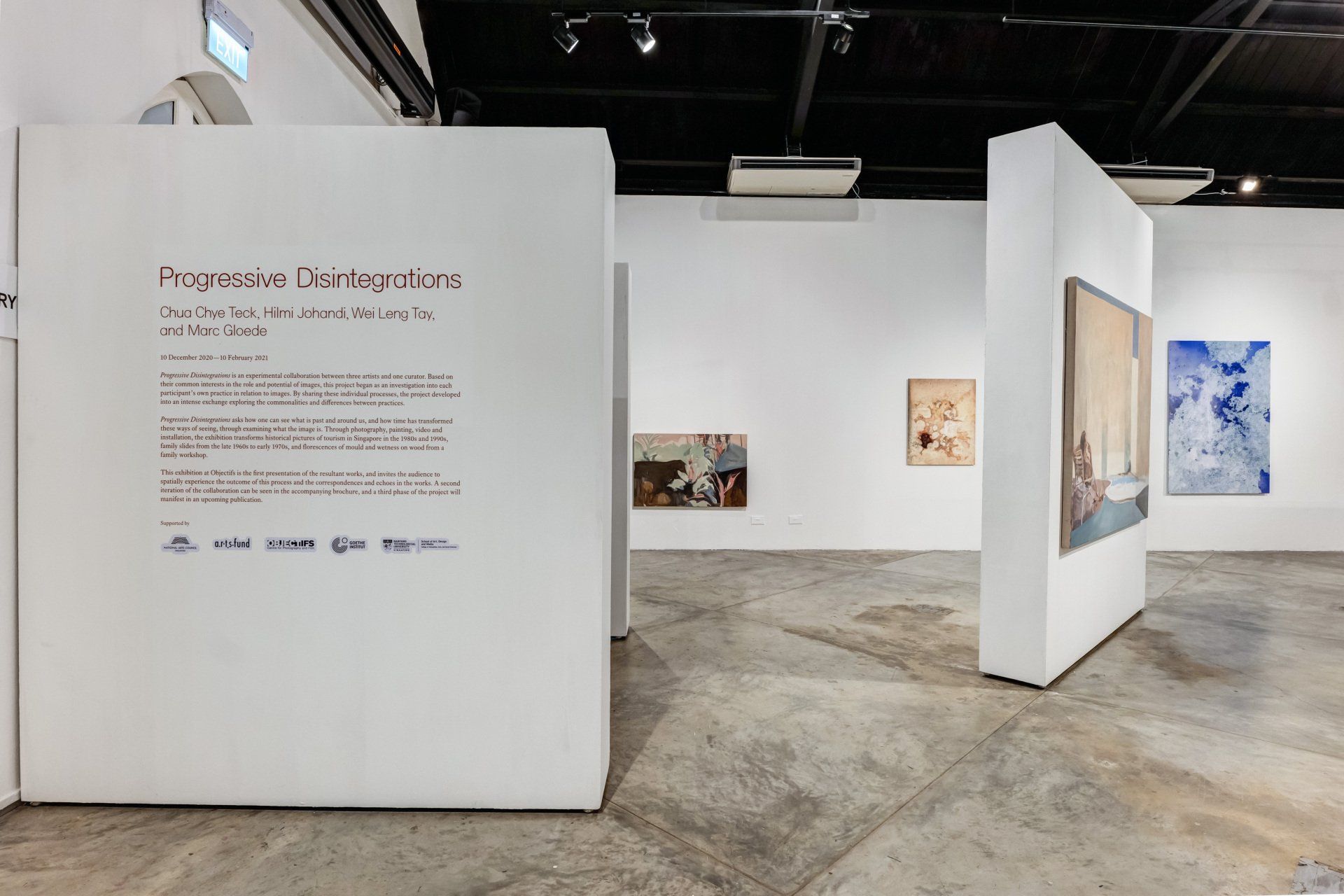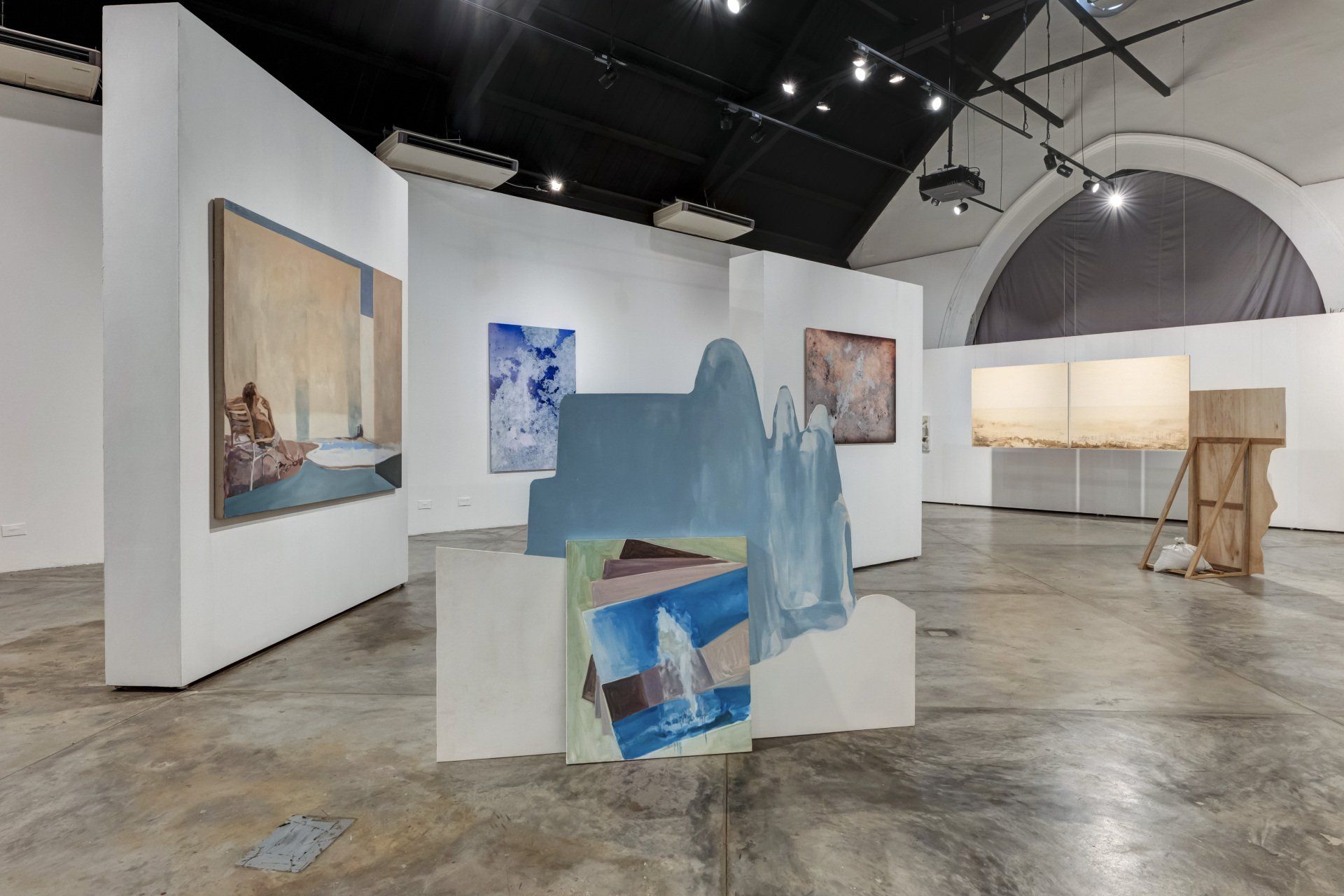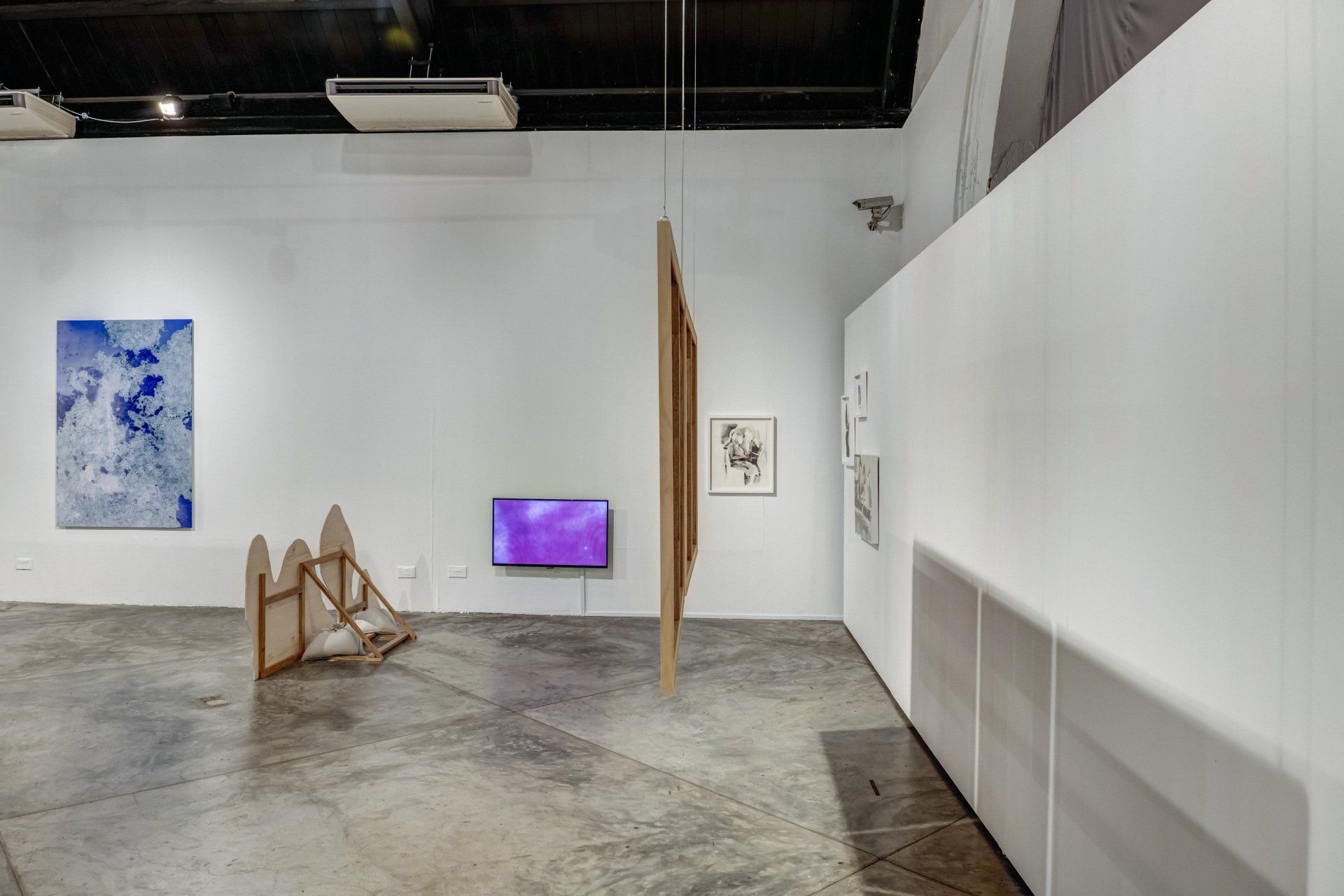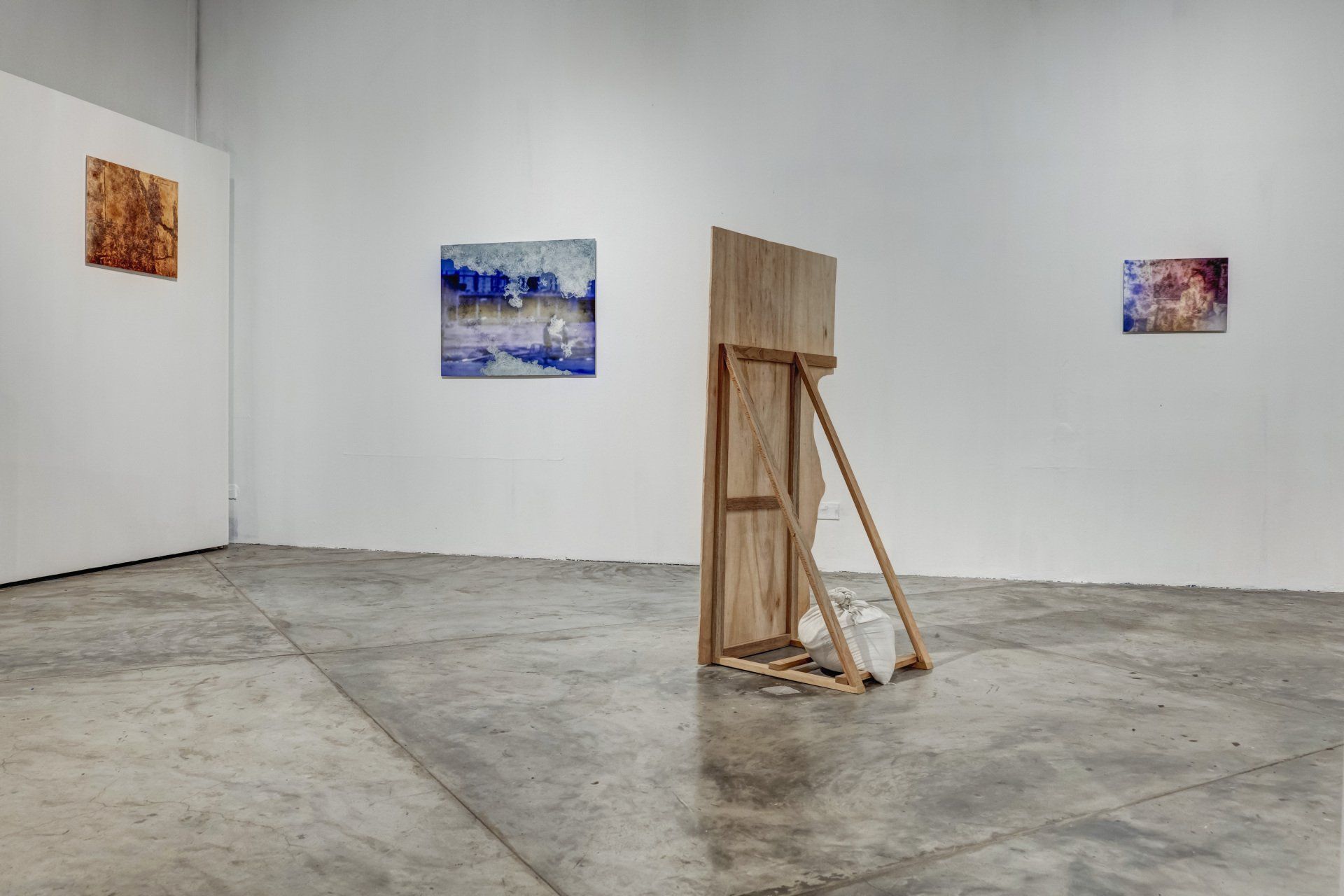Untitled: Microscopic Images
Excerpt. Title: One half frame 135mm colour reversal film slide. “I-71” hand-written on Agfacolor-branded heat sealed cardboard slide mount. In Agfacolor-branded orange plastic slide box labelled “TITLE Perth people DATE Sept. ’70.” // 500x magnification. Full ring episcopic and transmitted illumination. Cropped. // Recording at 1080p of image in Keyence WHX_5000 digital microscope HD LCD monitor with Sony A7rii camera and 24-70mm G-Master lens. // 8 min HD colour video, stereo sound.
In these works, photographic slides are composed, and re-imagined with a microscope. The microscope digitally renders layers of plastic, organic material, dirt, and the represented image in the analogue photographic slide from three dimensional space into a two dimensional space. And in this way presents markers of history, time, nature in the photograph through its materiality, translocation, and temporal shifts. Included are 7 photo prints and 1 looped 8 min video. (The work was part of the first exhibition of Progressive Disintegrations - a collaboration between myself, Marc Gloede, Hilmi Johandi and Chua Chye Teck, at Objectifs Centre for Photography and Film.)

